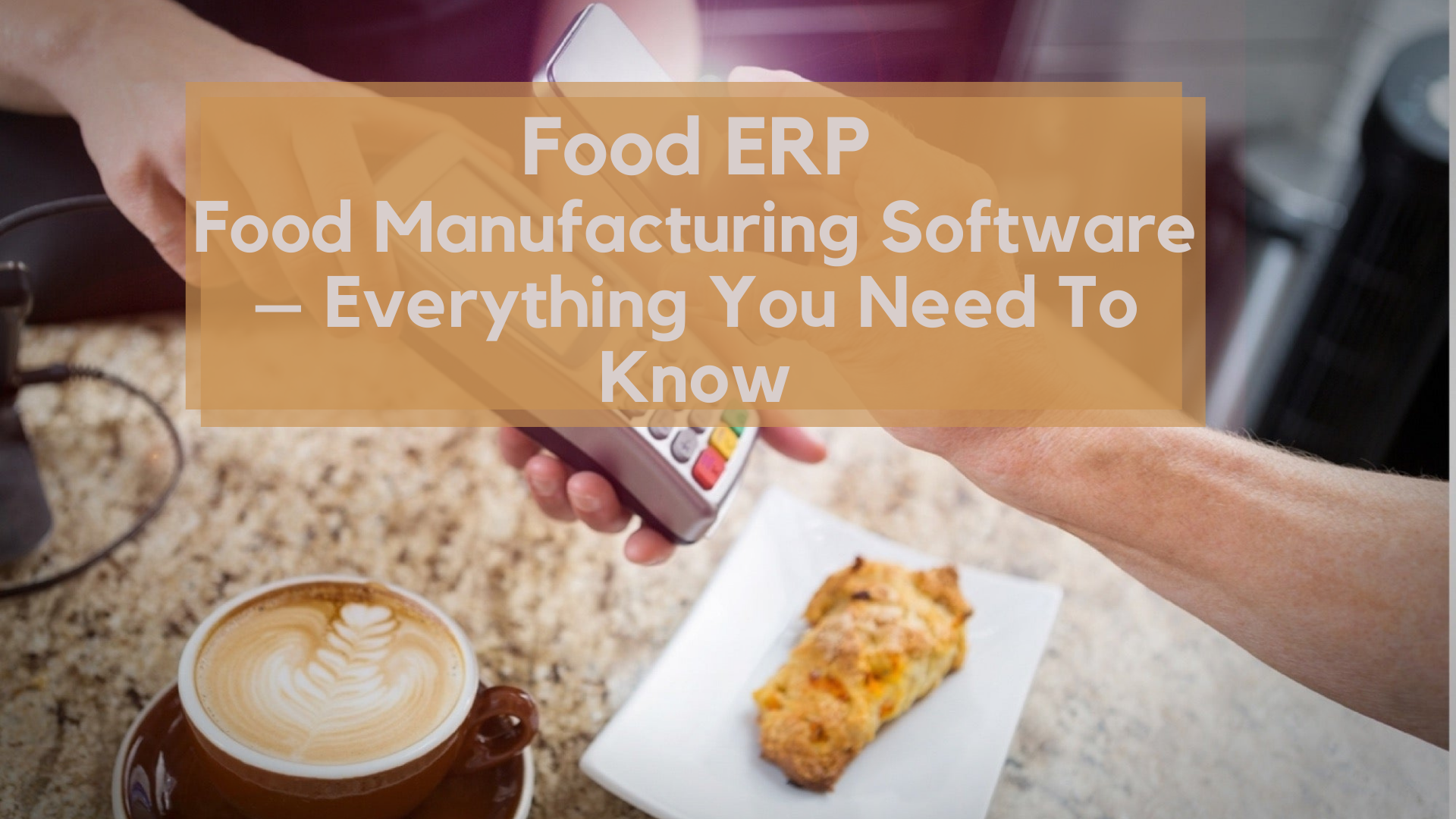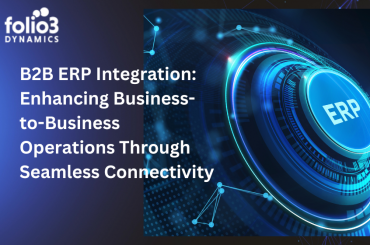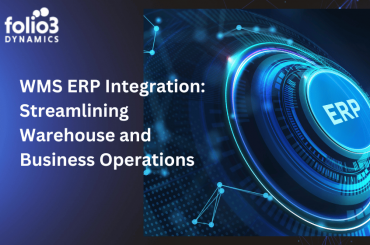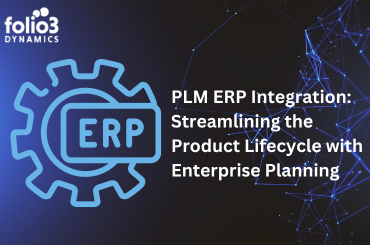The food industry is a highly competitive industry that has been struggling with lower profit margins. There are various challenges that businesses in the food industry have to overcome on a daily basis, such as checking the ingredients and complying with safety standards for food and others. Ranging from expiry date tracking to handling the recipes, food manufacturing businesses have too much on their plate to handle, and it can become menacing for companies to manage everything effectively, all the while manual processes make everything extra tricky. That’s where Food ERP and food manufacturing software come to the rescue.
The food ERP and food manufacturing system automate various business processes to assist companies in better manage daily operations with increased efficiency, subsequently leading to better profits. If this is captivating your attention, read this article, and you will get on-point information about the food ERP!
Food ERP & Food Manufacturing Software – What Is It?
To put it simply, Food ERP software is much like any other ERP system, only here the features are focused on the food industry. It can automate the food business tasks, such as finance management, human resources, and quality assurance. Also, the food ERP systems can monitor the food’s safety and work on new products to meet the customer’s demands and changing trends. Not to forget, it streamlines the supply chain operations and ensures on-time food distribution.
Do You Need A Food ERP Software?
When the food businesses are new, handling the transactions can be easy, but as businesses grow, activity volume increases, and data starts piling up things become tricky. These things cannot be handled with the basic software, and inefficiency admin operation will hinder the business operations. In addition, the growing businesses need to take a systematic approach towards operational optimization to ensure they are getting out most profits. Below are some of the symptoms that indicates that you need the food ERP system;
- When you are unable to find out certain answers about the business decisions
- Excessive yield and waste because the production and inventory processes aren’t being managed properly
- Decreasing customer satisfaction levels because the delivery times have increased or if customers are receiving wrong orders
- Tight working capital because you weren’t able to forecast the sales
- Frustrated and complaining sales team because they are unable to retrieve real-time information to help customers
If your food business is experiencing any of these symptoms, it’s pretty evident that you need the ERP for food and beverage manufacturing. Remember that Food and Beverage ERP Software implementation can take a long time, so make sure you start working on the software development and deployment early. You can opt for Folio3 for having access to the food ERP system or Dynamics 365 food ERP for your food company to meet the budget and needs of different companies.
On top of everything, you should opt for the process manufacturing ERP category because it’s perfect for companies that produce products from recipes and formulas. Such ERP systems will help scale the food batch, find substitutes for ingredients, optimize the food’s shelf life, and trace the ingredients. Also, you should look for some additional features, such as nutritional fact calculation, allergy management, and reverse billing.
How to Find & Manage the Food ERP Development Process
If you are ready to design and implement the food ERP software for your food manufacturing business, this section will help you find the best software that’s capable enough to handle your business needs. For the most part, the food companies connect with the consultant because they can evaluate the software and match the prerequisites. However, the tips mentioned in this article should help you navigate through the process.
Needs Assessment
The food company needs to reflect on the business operations and look for the functionality and operational gaps. The information about these gaps will help you determine the needs. Once you understand the specific needs of your food business, you will be able to determine your desired features and opt for the software that delivers those features.
Vendor Evaluation Matrix
Now that you understood your business needs and desired features write them down and find out the priorities. Your goal should be to design the scorecard that helps evaluate every option because objectivity is essential. This is because making a critical business decision based on emotions is the biggest mistake. So, you need to opt for a vendor evaluation matrix because it will eventually add value to the ERP systems.
Proposal Request
Issuing the RFP should be your next step once you’ve found out the objective needs. Remember that RFP should be clear and in-depth to make sure everything is easy to compare and evaluate without compromising objectivity. While designing the RFP, make sure you include the scoring matrix to determine how you will make the business decision. For instance, remain transparent about your delivery needs because higher quality standards and clear RFP will increase the responses.
On the other hand, if you aren’t clear on some point, simply ask for recommendations and disclose if you understand your needs. Lastly, be to the point in your RFP because nobody likes to read a book!
Objective Evaluation
Evaluation is essential, and it will be easier if you make a concise RFP. However, the evaluation might take a long time if your requirements are complicated. The ideal solution is to integrate the company’s cross-section to make an objective evaluation. This will ensure that you’ve broad insights and make a better decision (try to involve your employees in this process for practical outcome).
Lead & Prepare For Implementation
The implementation of food ERP will result in behavioral changes, organizational challenges, and technical glitches. For this reason, the food companies need to prepare their team and provide sufficient training. On top of everything, choose the ERP vendor with the technical expertise to handle the organizational challenges and support the management in implementation.
The Must-Have Features of Food Manufacturing Software
Inventory Management
When it comes down to the food industry, optimizing inventory control and management can be challenging for the manufacturers. For instance, the companies need to manage an extensive range of perishable ingredients and meet the sales target. All of this requires a high-end and best-performing inventory management feature. In case you are operating at a large scale, opt for resource mining, elegant and high-tech ERP systems to meet advanced requirements.
On the other hand, medium-scale food companies generally don’t have the resources and capital to invest in such high-end inventory management features. However, the right approach is to implement productive, efficient, and profitable inventory management features. Keep in mind that well-designed inventory management will lead to efficient and faster growth that scales up the business.
Batch Tracking
If your food company is dealing with products with shorter shelf life, the ERP system should have the ability to trace and track the inventory at all times. For this reason, the supply chain must be visible to ensure the food inventory management is effective. In addition, proper visibility on every food item’s movement will develop a ripple effect that promises higher efficacy and efficiency on every feature, such as purchasing, forecasting of demand, distribution, sales, and manufacturing.
As far as the batch tracking feature is concerned, it allows the food companies to track the product batch through every manufacturing stage, such as distribution and processing. The batch tracking feature provides the ultimate flexibility and freedom to trace the food product. It can eventually reduce the losses, so the food batch isn’t compromised. It wouldn’t be wrong to say that batch tracking promises optimal batch location and identification.
A company’s ability to locate every food product in the inventory will lead to real-time leads. The loss can also occur if the inventory is mishandled, mismanaged, and misplaced. So, having the batch tracking feature will eventually help keep inventory stocks at an optimal level.
Automation
While buying the food ERP, it’s best to have the automation features to enhance the procurements, distribution, production, and sales efficiency. This is because if food companies are unable to trace, account, and track the stocks, the food companies won’t be able to optimize the inventory protocol. The food companies need to control the inventory flow from errors in distribution, purchasing, production, and storage.
That being said, the automation features will help achieve inventory management and other aspects of food manufacturing. In addition, the automation feature releases automatic inventory updates to the product managers. It will eventually mitigate the chances of product recalls. Also, automation will optimize food business strategizing, planning, and supply chains.
Data Availability
Whenever looking for a food ERP system, you must have quick access to business data. It is best to opt for the software with cloud storage to ensure the data can be accessed anytime and anywhere, as long as they have an internet connection. As a result, the company will remain updated about the data changes, and everything will be kept in the loop.
Scaling Features
Higher productivity and efficiency are essential to ensure consistent business success and growth when it comes down to higher productivity and efficiency. The majority of food businesses are struggling to scale up the business, which is why the ERP should have the ability to evolve and adapt to the business requirements and needs. For this reason, the food ERP and food manufacturing software should have the scaling feature to ensure the businesses grow.
Flexibility
With food ERP, you should always opt for one with flexible infrastructure. It is essential to get the food manufacturing software that complies with the business’s needs and integrates with the platform. With the flexible features, the food business managers will be able to integrate the data and share it with the suppliers. As a result, the lead times will be reduced, and the communication will be clear, error-free, and open. That being said, the chances of undersupply and oversupply in inventory will be reduced.
The food companies tend to deal with perishable items, and having flexible features will result in business savings. In addition, it will eliminate the chances of production delays and wastage. Not to forget, you will be able to manage the sales pretty efficiently.
Seamless Integration
In the majority of food businesses, gaining the competitive edge demands constant process optimization and system rethinking to ensure the business processes are efficient. That being said, if the food ERP has integration for improvements and updates, it will help with seamless business processing. So, make sure your food ERP has the said integration standards.
Planning & Reporting
If profit margins are tight, collecting and reviewing the business data is essential, and the right food ERP system will provide managers with the analysis and reporting tools. As a result, the businesses will have access to profit, loss, concept sales, and unit sales information. In addition, these planning and reporting features will help business managers make productive forecasts.
10 Best ERP Systems for Food Manufacturers
- BatchMaster
This is the best Food ERP software for the food industry manufacturers and distributors who want to grow and expand their business operations. There are embedded and powerful features, including inventory management, batch production, Tracking, and cost designing. It will deliver straightforward and smooth integration, and it can be connected with QuickBooks as well as SAP.
- Deacom
For food businesses with challenging and complicated requirements, Deacom is a great ERP system and offers top-notch features. It has become a self-sufficient and well-integrated system with built-in financial and accounting tools. As a result, the resource management tasks will be improved, which makes it a good option for medium-scale and large-scale food businesses.
- ProcessPro
This ERP software delivers an end-to-end system that provides high-performing and simple-to-use features, offering better control and easier access to business information. Various profitable features of the system include financial reporting, formula management, inventory traceability, and inventory tracking.
- Plex
This is the cloud-based ERP software that’s designed for food manufacturing. They offer the cloud approach that promises easy and quick updates. There are different features available on Plex, such as loading docks, C-suite, and shop floor. In addition, it is suitable for every business, irrespective of their level.
- Sage
Sage delivers flexible and high-strength features. This is because Sage is a full-scale business solution that not only reduces costs but maximizes productivity as well. In addition, there are SME financial tools available.
- IFS 10.0
This ERP software has been around since 1983, but there have been various modifications in the system. At the core, IFS 10.1 is a data-oriented solution that drives value for businesses.
- Enterprise IQ
Enterprise IQ is the perfect ERP system for food businesses looking for end-to-end visibility needed for business expansion and growth. This is because there are MES and ERP functionalities that allow businesses to optimize the food distribution and manufacturing processes without compromising the quality metrics.
- Ross ERP
Ross ERP boasts a fine range of features and tools, such as yield management, formula management, and inventory traceability. In addition, it has an extremely quick implementation process, which makes it suitable for businesses that don’t have an IT team.
- Enterprise 21
This is a complete and fully integrated distribution and manufacturing solution that can overcome every food business challenge. It can help scale the businesses, and the customer support is highly responsive.
- SYSPRO
SYSPRO is designed to be the people-first software solution and has a wide range of features available. In addition, the users can customize the functions to gain the best outcomes.
The Final Words
The food manufacturing industry is known to have tight profits, extremely stringent compliance prerequisites, and never-ending competition. When not paid heed, these factors can hinder the business growth, but the right ERP system is all you need to optimize the food business processes and overcome the challenges. So, when are you getting one?





